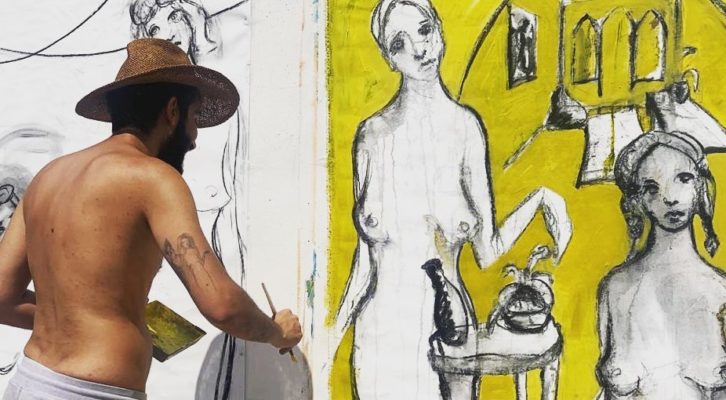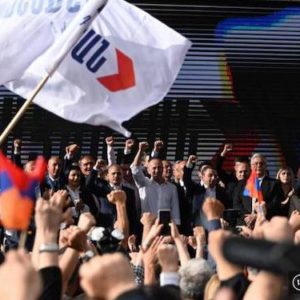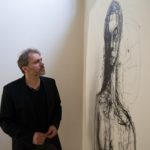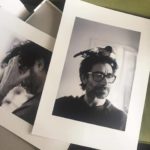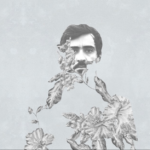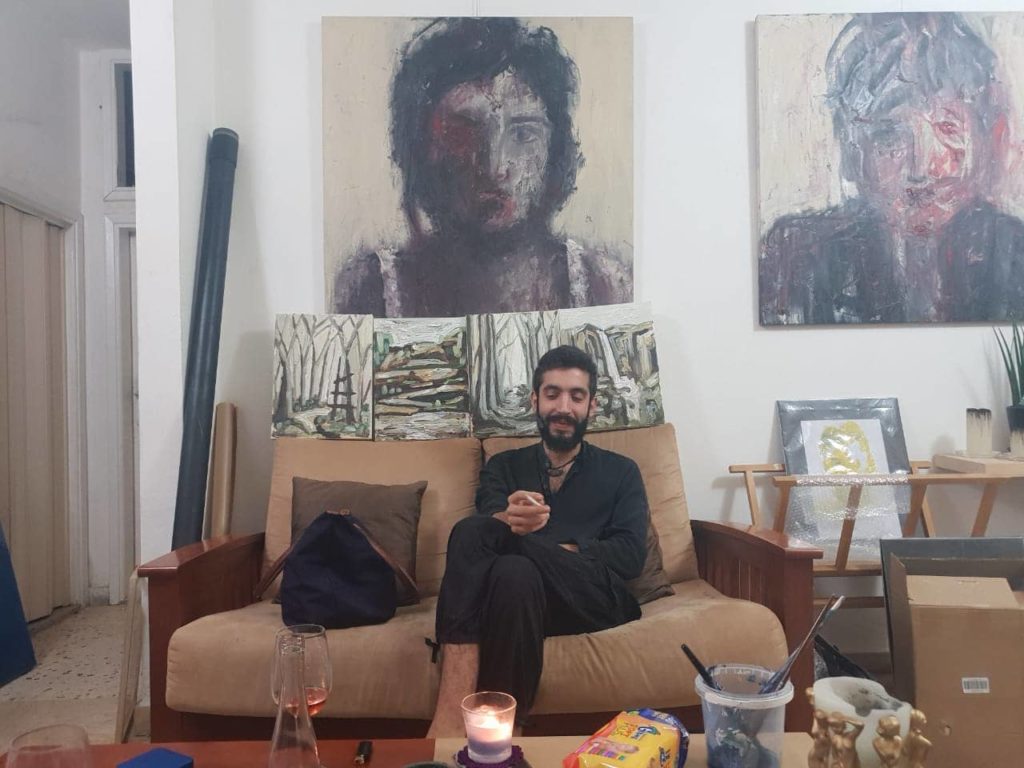
As I was wandering his atelier, Simon begins to describe with precision and a gleaming passion, the details of the work of his fellow artists. He knows the story of each one vividly. Simon has immense admiration for the unique talent of each. I can tell, however, that his praise and critique of their work are genuine and without bias.
Simon proudly begins showing me his collection, and I start to recognize some of these artists. He then starts to talk about the history of Lebanese arts. Never, have I met someone so fully aware of our identity in terms of art!
Simon is truly a guardian of Lebanon’s art legacy but I interrupt him gently:” Let us focus on you today”.
He smiles humbly and I feel he is almost shy about the emotions I am having, while completely lost, gazing upon Simon’s own paintings. I sighed and smiled. “young man, you just gave me an eyegasm”, I smile.
He blushes, rapidly changing the subject by asking me what would I like to drink. “Pour me some wine”, I reply while evaluating him. His black clothing, his beard, and his quiet and serene look and demeanor made me feel like in the presence of a wise monk.
I shall call you “my yellow art monk”, I announce lightheartedly. He replies:” I love yellow! I use it a lot”
I smile, and mention that very few painters dare to highlight with yellow, it is a bold color. I pick a lighter and show him that the fire does not have a shadow. Your yellow save your paintings from their dark side, I reflect him, Simon, you take the eyes on a trip through a tunnel, onwards towards the light, and I want to just stay on for a while. Like a child at the beach, with just one more rockpool to be explored, or a spectacular seashell to be found.
Simon whispers to me:” enjoy the moment, for each time I paint, I come to visit a state that throws me into a lucid moment before getting snatched from it again”
I remind him of René Char’s quote:” lucidity is the wound closest to the sun”
He shows me his new paintings that focus on capturing the moment. They are all portraits with faded faces. He tells me he likes to drink coffee outside and look at the pedestrian faces and try to remember them when they return. He shows me these blurred faces, which remind me about how imprecise our memory can be. A word comes to my mind out of nowhere “Alzheimers”. Is he trying to capture something stuck in the past, I ask myself?
Simon is magnificent with the colors he uses and his paintings are sharp, as he likes to paint with a knife. Sharp as the truth and agitated, yet as quiet as our memory.
He begins to talk about his muses, his gestures become more agitated, as he is painting them again, but through words.
Simon is a natural giver and while he was talking, I felt that we both connected and it was no longer just an interview.
Simon, with genuine care, began to share with me his vast and impressive knowledge. He started first by sharing an intensive and brilliant understanding of Lebanese female artists who had passed away and sadly were given little credit for their life’s work.
Artists such as Cici Sursock, who used to wander from home to home looking for the rich families in Beirut, to paint beautiful portraits of, while reciting stories. He quotes her famous sentence: “Now, it is time to be silent as I have to paint the eyes”.
He then talks about another female artist, Helene El Khal who was monochrome in her style and was, back then, ridiculed for being too much avant-garde.
As we continue our conversation, what strikes me the most is his eyes, they are full of tenderness and it is overwhelming.
Most of the artists appear inflicted with a narcissistic injured wound somewhere deep within, however, Simon seems like he owns his wounds and he has healed and grown from them.
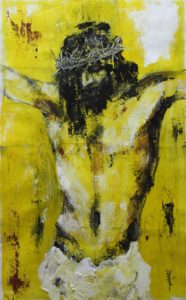
He tells me about how he created the Lebanese talents gallery, in order to help assist marginalized young artists who don’t benefit from any support. He shows me again some of these artists’ work. Adding:” I want everyone to be able to buy art, we need to democratize it and unify the prices. I want to show the world that we have a Lebanese art identity”.
Simon wants to be the voice of these artists but he also wants to be able to voice his own “self” through his paintings. One of his past exhibitions was based on the metamorphosis of the yelling, based on Kafka’s dominant character and recessive nature.
“That voice that we keep quiet in our recessive nature, I wanted to make it loud in my paintings.” he voices.
He interrupts me while I was smiling: ”You see Christiane, the smile that you just offered me is a voice coming from elsewhere”.
While listening to Simon, my mind wanders and for an instant coming back to Lebanon after 17 years abroad made much more sense and I finally felt I was home.
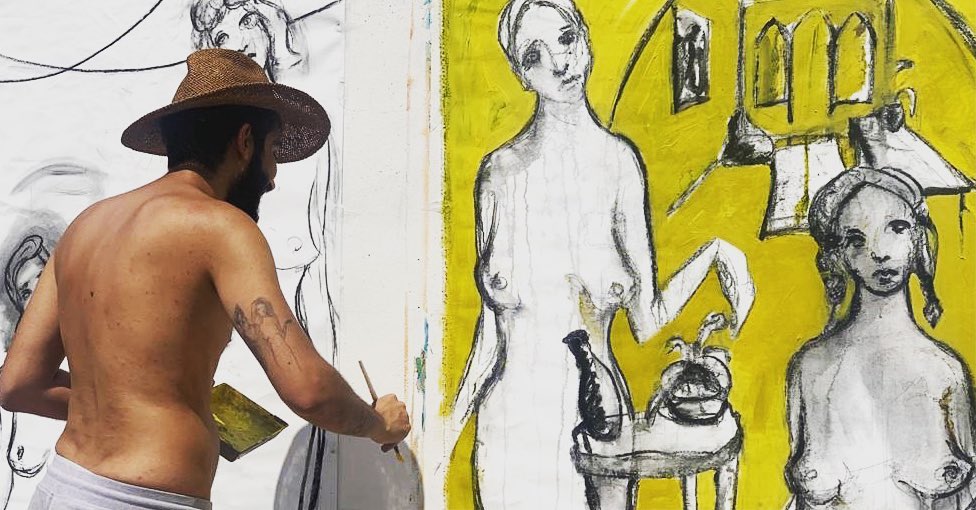
Christiane Waked is a columnist, political analyst, and Arts & Culture, contributor. She is the former Press Attaché of the French Embassy to the UAE and former analyst and linguist of the French Interior Ministry.


